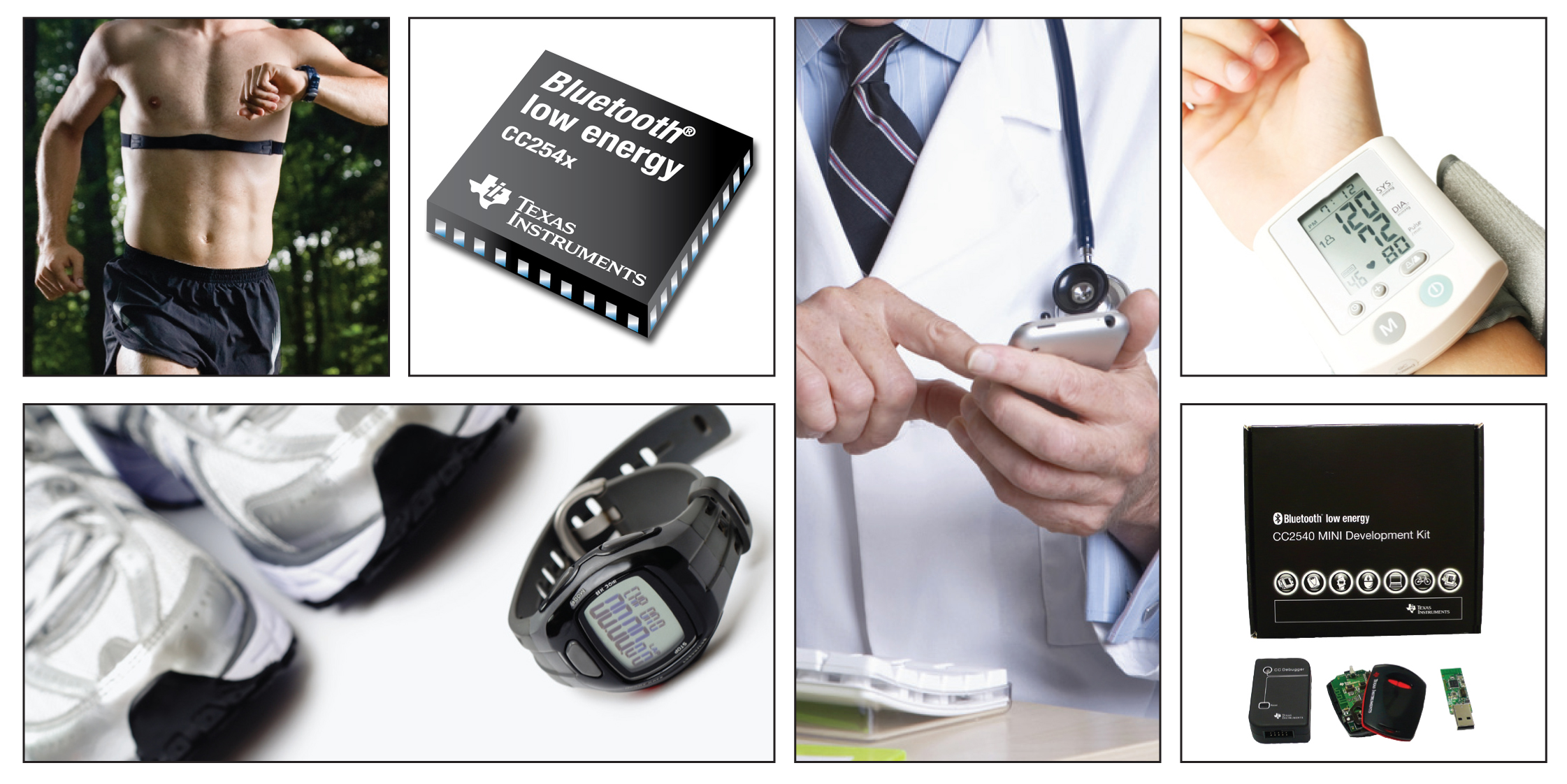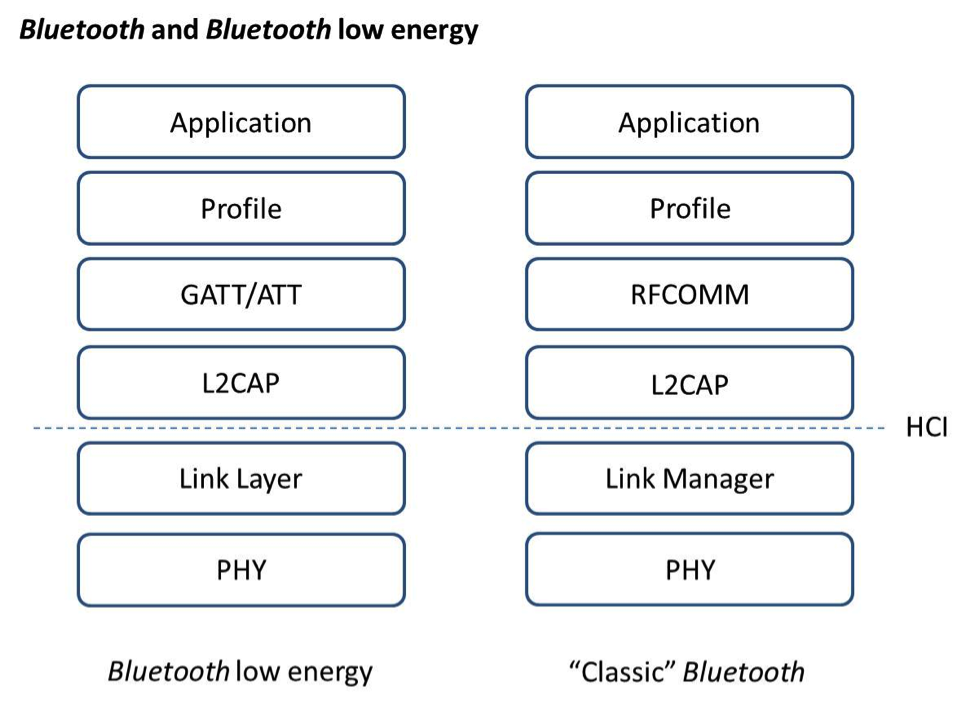The three flavours of Bluetooth
Initial impressions of being over-complicated and perhaps unreliable meant Bluetooth got off to a slow start back in the early 2000s. Now, it enables an increasing number of connected devices, but which version is right for your application? By Karl Torvmark, Head of Strategic Marketing, Wireless Connectivity Solutions, Texas Instruments.
The Bluetooth 4.0 specification - commonly known to as Bluetooth Low Energy (LE) or Bluetooth Smart - brought a new form of Bluetooth technology to consumers; developed to enable new types of Bluetooth devices in areas where it hadn’t previously been widely adopted for reasons of battery life or cost. But now, with three 'flavours' of Bluetooth available, it's not always immediately obvious which is the best option to use for a given product.
Bluetooth LE started out as 'Bluetooth lite' inside of Nokia’s research labs in the mid-2000s, and was envisioned as a way of bringing Bluetooth to simpler, less powerful devices. Initially Nokia, together with a number of other companies, put together an industry alliance around this technology and christened it Wibree. However, a year or so later, it became clear that it made the most sense to develop this technology inside the Bluetooth Special Interest Group (SIG), and the technology was handed over to them. At this point the technology became known as Ultra-low Power Bluetooth, and would eventually be re-christened Bluetooth Low Energy (LE). This technology was included in the Bluetooth v4.0 specification when that was released in 2010.
This has led to several distinct, but inter-linked versions of Bluetooth. As such, those without an in-depth knowledge of the inner workings of the technology assume that Bluetooth Smart lowers power consumption for all types of Bluetooth usage, which is incorrect. The benefits of Bluetooth Smart only apply to devices that actually make use of the low energy features, and only in certain use cases.
The current state of Smart
Since its development Bluetooth LE has been integrated into a wide range of devices including heart-rate monitors, watches, smart meters, peripherals and many more (some of which are featured at the Bluetooth SIG’s Bluetooth Smart product showcase pages (www.Bluetooth.com/Pages/Bluetooth-Smart-Devices.aspx). Similarly, Bluetooth Smart is commonly supported in new mobile phones, tablets and PCs ensuring a healthy ecosystem for the technology.
From a consumer perspective, Bluetooth devices incorporating Bluetooth LE technology are branded using the 'Bluetooth Smart' and 'Bluetooth Smart Ready' monikers. These do not necessarily correspond directly to the technical categories, but rather have their own definitions rooted in the consumer experience. Bluetooth Smart Ready devices are generally those that support connections from a Bluetooth Smart device — for instance a smartphone, tablet or laptop. Bluetooth Smart devices are Bluetooth low energy-based devices that communicate with Bluetooth Smart Ready devices; for instance a heart-rate monitor or smartwatch. One important thing to note is that Bluetooth Smart devices by definition can only communicate with Bluetooth Smart Ready devices, and not with Bluetooth devices based on previous versions of the technology.
The intention is that when the consumer purchases a Bluetooth Smart device, he or she will know that this will work with other devices bearing the Bluetooth Smart Ready logo, but not with devices only bearing the regular Bluetooth logo. From a technical perspective, there are essentially three different types of devices: 'Classic' Bluetooth, Bluetooth 'dual-mode' (aka Smart Ready) and Bluetooth 'single-mode' (aka Smart).
The first is the 'classic' Bluetooth device as mentioned earlier. These are typically those devices that need a maintained and often high-throughput connection. In these cases, Bluetooth LE does not provide much benefit, and these will probably remain Bluetooth 'classic' devices for the foreseeable future.

Figure 1: An array of examples of Bluetooth LE devices, driven by TI technology
Then there are 'dual-mode' devices, which can communicate with both 'classic' and Smart devices. These devices do not gain any benefit of the power consumption improvements enabled by Bluetooth low energy, as they still need to conform to the requirements of legacy Bluetooth devices, but they are an important part of the overall ecosystem. These are usually the hub devices that a Bluetooth device will connect to, such as a computer, a tablet or a smartphone.
The third and perhaps most interesting category are the 'single-mode' devices, which support Bluetooth LE only. Although these devices can't communicate directly with Bluetooth 'classic' devices, they have the advantage of being highly optimised for Bluetooth LE.
In essence, Bluetooth LE has been optimised for use-cases that have a relatively low duty-cycle. For example, a heart rate belt may stay connected for several hours during a long work-out, but it only needs to transmit a few bytes every second, so in an optimised protocol, the radio would be on for less than a millisecond. Compare this to a headset, car stereo or wireless speaker, where the amount of data is measured in the hundreds of kB per second and the radio might be on for a double-digit percentage of the time. The original Bluetooth specification was designed to do general-purpose wireless data transmission, and has been successfully adapted to other use-cases such as input devices and wireless audio. Bluetooth low energy was designed to address use cases that the original Bluetooth specification is less suited for, and therefore extend the overall addressable market for Bluetooth.
Markets for Bluetooth Smart
Thanks to this optimisation, Bluetooth LE has seen good adoption in the sports and fitness space. It also has great promise in medical and health-care, in novel new use-cases such as proximity tags, beacons, computer peripherals and remote user interfaces. In recent months we have seen the rise of a new breed of 'connected' devices based on Bluetooth LE, including home automation and smart metering, a raft of smartwatches, proximity tags, activity monitoring and even a toothbrush.
Another growing application for Bluetooth Smart is as an enabler of the so-called 'Internet of Things'. Rather than being directly connected to the Internet, Bluetooth Smart devices interface to the Internet through ubiquitous Bluetooth Smart Ready devices such as smartphones, tablets or PCs. The main benefit of this approach is that the wireless devices can be simpler, lower cost and lower power than devices that would interface to the Internet directly (either through GSM/3G/LTE or WiFi connections). Also, no extra infrastructure is required; the users already have the equipment needed to interface Bluetooth Smart devices to the Internet.
In order to achieve this level of optimisation, Bluetooth LE differs from 'classic' Bluetooth right down to the physical layers. The Bluetooth LE PHY is a slimmed-down and optimised version of the Bluetooth Basic Rate (BR) PHY. While the BR PHY hops over 79 channels (although this can be reduced down to a minimum of 20 channels through adaptive frequency hopping) and performs discovery on 32 channels, the Bluetooth LE PHY only has 37 channels and does discovery on three channels.
Since Bluetooth LE has a lot fewer channels to go through when doing discovery, the process is much quicker, and a connection can be set up within a few milliseconds rather than the couple of seconds required in 'classic' Bluetooth. Similarly, the channel spacing of Bluetooth LE is 2MHz in contrast to BR’s 1MHz, this has the effect of reducing demands on RF filtering.

Figure 2: The relationship between Bluetooth Smart and Bluetooth Smart Ready devices (Source: Bluetooth SIG)
Moving up the stack we see that Bluetooth LE connections are essentially similar to BR’s so-called sniff sub-rating mode. This provides Bluetooth LE with an energy-efficient way of maintaining connections while keeping the radio off as much as possible. Not immediately apparent from the Bluetooth specifications is the fact that the relaxed requirements allow IC vendors to do a lot of optimisations that are difficult or impossible to make with 'classic' Bluetooth, lowering sleep and active currents and shortening switching times. These optimisations enable single-mode chips to be lower power, simpler and lower cost than dual-mode or classic chips.
There are also differences at the profile layer. Bluetooth low energy profiles so far are all layered over GATT, using the GATT/ATT protocol to exchange data. In 'classic' Bluetooth, profiles often define their own protocols. This is more flexible, but renders the implementation more complex and increases the amount of code that needs to run, increasing complexity. With all this in mind, the question can be raised about what version is best suited for a given product.
When it comes to choosing between dual-mode and single-mode ICs or system-on-chips (SoCs), it depends on what application you are targeting. If you need to communicate with 'classic' devices, then the choice is simple; you need to use a dual-mode device. If you have flexibility on both sides of the link, then the most important criteria are determined by what and how much data you are moving over the wireless link. If you are moving a lot of data or streaming media, then you should go with a 'classic' solution.
If you are only transmitting smaller amounts of data then Bluetooth low energy may be a better choice. Bluetooth low energy can provide very long battery life when used in the types of use-cases it was designed for. For example, a sensor communicating with a phone once every second 24/7 may last for more than a year on a CR2032 coin cell. Power consumption (and therefore battery life) scales with the communication period used. Bluetooth LE supports communication periods of between 7.5 milliseconds and 16 seconds. The 16 second limit is related to a communications time-out; if longer times are needed, it is possible to drop the connection and then reconnect every time as needed.
SoC solutions
For single-mode ICs, the industry is moving to ICs that can implement all the functionality in a sensor-type device except the sensing element itself. For ‘classic’ and dual-mode, newer ICs are generally dual-mode rather than 'classic', so from a hardware perspective, the choice will often be made for you. That said, certain application-specific devices might continue to be BR only if the applications they target do not make use of Bluetooth LE. From a software perspective, many commonly-available Bluetooth stacks include low energy support at this point, although again, there may be some that will not.
 and Bluetooth 'classic' (right) architecture.png)
Figure 3: Comparison of Bluetooth low energy (left) and Bluetooth 'classic' (right) architecture
Other factors may also play a role. For example, if you want your device to be able to communicate with iOS-based devices, then Bluetooth low energy may be an easier way to achieve that. Apple currently requires any 'classic' devices that support anything other than a set of pre-defined profiles to be certified under the MFI program. For Bluetooth LE devices there are no such restrictions, and an iOS app running on a reasonably modern Apple device can use a GATT-based API to communicate with Bluetooth LE devices. Similarly, most recent Android devices support Bluetooth v4.0 and Windows 8 has full Bluetooth v4.0 support.
A final factor to consider is the ease of development and availability of development tools and documentation. Some single-mode Bluetooth LE vendors provide royalty-free software stacks with all documentation openly available from a web site. In the 'classic' Bluetooth space, it is more common to charge royalties for the protocol stack and keep datasheets and other technical documentation under NDA.
Whether you call it Bluetooth Smart, Low Energy or LE, with Bluetooth v4.0, designers have another tool in their toolbox; one that opens up a range of new possibilities for connected devices and ease-of-use.
This choice builds on the massive success of Bluetooth in the short-range wireless market and enables new applications to make use of Bluetooth technology through lower power consumption, lower complexity and lower cost.











